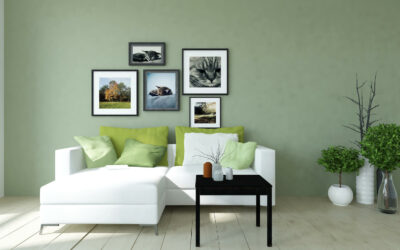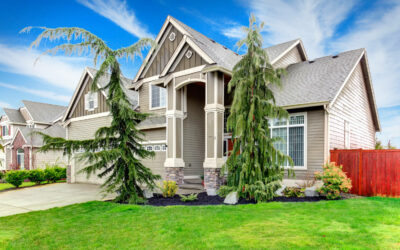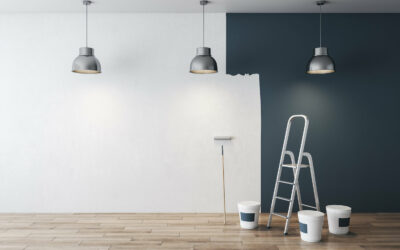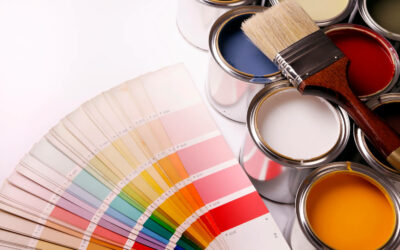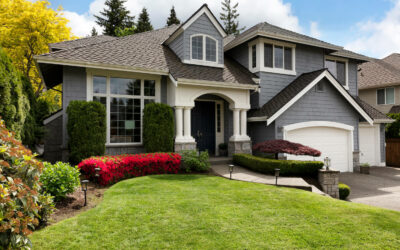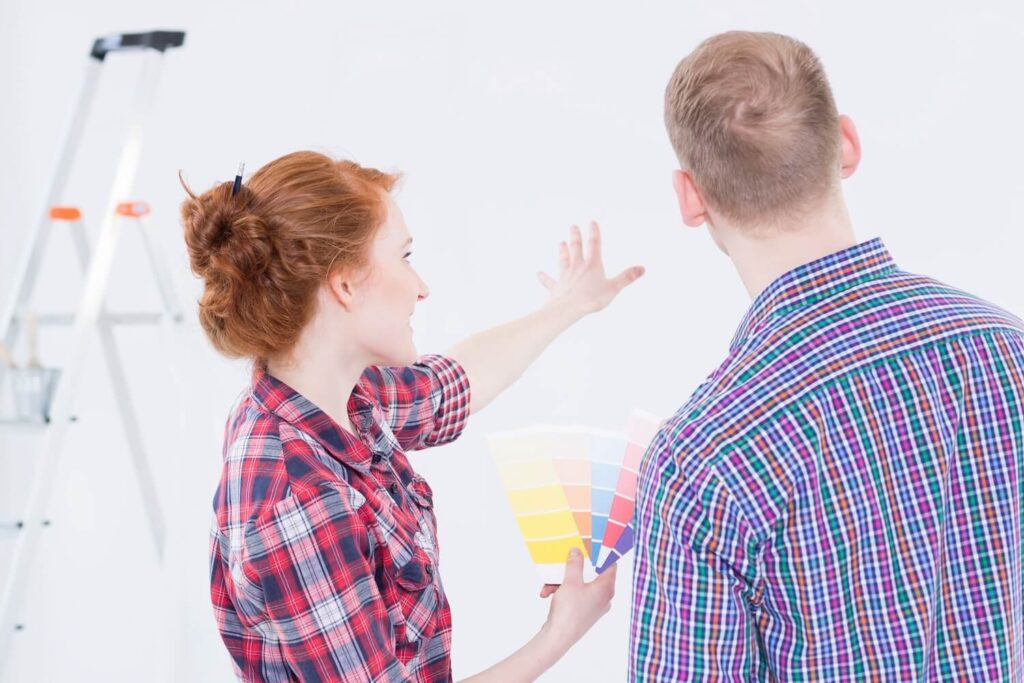
Colors have a profound impact on our lives. From the clothes we wear to the way we decorate our homes, colors play a significant role in shaping our experiences and emotions. The field of color psychology explores how different colors affect human mood, behavior, and perception.
This article delves into the psychology of color, with a particular focus on how paint colors influence our mood and behavior in various home environments.
The Science Behind Color Psychology
Color psychology is rooted in the study of how hues interact with human emotions and mental states. While cultural and personal preferences play a role in color perception, there are certain universal responses to colors that have been observed. These responses can be traced back to evolutionary biology and the way our brains process color information.
The Role of the Brain
Our brains interpret colors through the visual cortex, where light wavelengths are converted into signals. These signals are then processed in the limbic system, the part of the brain associated with emotions and memories. This connection explains why colors can evoke specific feelings and reactions.
Evolutionary Influences
From an evolutionary perspective, colors have been crucial for survival. For example, the color red can signify danger, while green often indicates safety or fertility. These associations have become deeply ingrained in our subconscious, influencing our responses to colors in various contexts.
The Psychological Effects of Different Colors
Each color can evoke a distinct set of emotional and psychological responses. Here’s a closer look at how some of the most common colors affect mood and behavior:
Red
Emotional Impact: Red is a highly stimulating color. It is associated with energy, passion, and excitement. However, it can also evoke feelings of anger and intensity.
Behavioral Impact: Red can increase heart rate and blood pressure, making it suitable for environments where high energy and activity are desired, such as gyms or dining areas. However, it may not be ideal for spaces intended for relaxation.
Blue
Emotional Impact: Blue is known for its calming and soothing effects. It is often associated with tranquility, trust, and stability.
Behavioral Impact: Blue can lower blood pressure and slow heart rate, making it an excellent choice for bedrooms and bathrooms. It can also enhance productivity and concentration, which is why it is commonly used in office spaces.
Yellow
Emotional Impact: Yellow is a bright and cheerful color, often associated with happiness and optimism. However, excessive use of yellow can lead to feelings of frustration or agitation.
Behavioral Impact: Yellow can stimulate mental activity and creativity, making it a good choice for kitchens and creative workspaces. However, it should be used sparingly in areas meant for relaxation.
Green
Emotional Impact: Green is a color that symbolizes nature, balance, and harmony. It has a calming and refreshing effect on the mind.
Behavioral Impact: Green can reduce stress and promote relaxation, making it ideal for living rooms, bedrooms, and spaces where people gather to unwind. It also has a restorative effect, which can enhance focus and concentration.
Purple
Emotional Impact: Purple combines the calm stability of blue and the energy of red. It is often associated with luxury, creativity, and spirituality.
Behavioral Impact: Purple can stimulate the imagination and inspire creativity, making it suitable for artistic spaces. It is also linked to introspection and meditation, which can make it a good choice for bedrooms and relaxation areas.
Orange
Emotional Impact: Orange is a warm and energetic color. It is associated with enthusiasm, excitement, and warmth.
Behavioral Impact: Orange can increase energy levels and stimulate social interaction, making it a great choice for dining rooms and social areas. However, like red, it can be overwhelming if used excessively.
Neutral Colors
Emotional Impact: Neutral colors like white, gray, beige, and black can create a balanced and calming environment. They often serve as a backdrop, allowing other colors to stand out.
Behavioral Impact: Neutral colors provide a sense of stability and sophistication. They can be used in any space to create a serene and unobtrusive atmosphere, allowing for flexibility in decorating with other colors.
The Impact of Color in Different Spaces
The effects of color can vary significantly depending on the context and purpose of a space. Here’s how different colors can be used to enhance various environments:
Home
- Living Room: Use warm colors like red, orange, and yellow to create a cozy and inviting atmosphere. Cooler colors like blue and green can make the space feel calm and serene.
- Bedroom: Opt for calming colors like blue, green, or lavender to promote relaxation and restful sleep. Avoid overly stimulating colors like red and bright yellow.
- Kitchen: Bright and cheerful colors like yellow and orange can stimulate appetite and create an energetic environment. Neutrals can also work well to create a clean and modern look.
- Bathroom: Soft blues, greens, and neutral tones can create a spa-like, relaxing atmosphere, ideal for unwinding.
Workplace
- Offices: Use blue and green to enhance concentration and productivity. Yellow can be used in creative spaces to stimulate innovation and creativity.
- Meeting Rooms: Neutral colors like gray and beige can create a professional and calm environment, while touches of green can reduce stress and promote calm discussions.
Retail and Hospitality
- Retail Stores: Bright colors like red and yellow can attract attention and encourage impulse purchases. Softer tones can create a more relaxed shopping experience.
- Restaurants and Cafés: Warm colors like red and orange can stimulate appetite and create a lively atmosphere. Cooler colors like blue might reduce appetite but can create a more elegant dining experience.
Cultural and Personal Influences on Color Perception
While there are general trends in color psychology, it’s important to recognize that cultural background and personal experiences significantly influence how we perceive and react to colors.
Cultural Differences
Different cultures have unique associations with colors. For example:
- Red: In Western cultures, red often symbolizes passion and danger, while in Eastern cultures, it is associated with luck and prosperity.
- White: In many Western cultures, white symbolizes purity and peace, while in some Eastern cultures, it is associated with mourning and death.
- Black: Often seen as sophisticated and formal in Western cultures, black can symbolize mourning and negativity in other cultures.
Personal Preferences
Individual experiences and memories also shape color perception. A person’s favorite color might evoke positive feelings, while a color associated with a negative experience might trigger discomfort or anxiety. Personal preferences should always be considered when choosing colors for personal spaces.
Practical Tips for Choosing Paint Colors
When selecting paint colors for your home or workplace, consider the following tips to align with color psychology principles:
- Assess the Purpose of the Space: Determine the primary function of the room and choose colors that support that activity. For example, use calming colors in bedrooms and energetic colors in gyms.
- Consider Lighting: Natural and artificial lighting can significantly affect how colors appear. Test paint samples in different lighting conditions to see how they change throughout the day.
- Balance Bold Colors with Neutrals: While bold colors can add energy and personality to a space, they can be overwhelming if overused. Balance them with neutral tones to create harmony.
- Use Accent Colors: Incorporate accent colors through furniture, accessories, and décor to add interest without overwhelming the space. This allows for flexibility and easy updates.
- Test Before Committing: Paint a small section of the wall and live with it for a few days to see how it feels. This helps ensure that the color creates the desired effect before committing to painting the entire space.
- Seek Professional Advice: Interior designers and color consultants can provide valuable insights and recommendations based on color psychology principles and your specific needs.
The Value of Professional Color Consultation
While many people enjoy the process of selecting colors and decorating their spaces, others may find it overwhelming. Professional color consultants can provide expert advice, making the process more enjoyable and less stressful. Here’s why seeking a professional color consultation can be beneficial:
Expertise and Knowledge
Color consultants have extensive training and experience in color theory, design principles, and the psychological effects of color. They understand how colors interact with each other and how they can influence mood and behavior. This expertise allows them to provide tailored recommendations that align with your specific goals and preferences.
Personalized Recommendations
A professional color consultant will take the time to understand your needs, lifestyle, and personal tastes. They will assess the existing elements of your space, such as furniture, flooring, and lighting, to ensure that the chosen colors complement and enhance the overall design. This personalized approach ensures a cohesive and harmonious look that reflects your personality and style.
Time and Cost Efficiency
While it might seem counterintuitive, hiring a color consultant can save you time and money in the long run. Their expertise helps you avoid costly mistakes, such as purchasing the wrong paint colors or having to repaint a room that didn’t turn out as expected. They can also recommend high-quality paints and finishes that provide the best value for your budget.
Access to Resources
Color consultants often have access to resources and tools that are not readily available to the general public. This includes professional-grade color samples, digital rendering tools, and industry connections. These resources enable them to create detailed color schemes and visualizations that help you envision the final result before making any commitments.
Enhanced Creativity and Innovation
Working with a color consultant can inspire creativity and introduce you to new ideas and color combinations that you might not have considered. Their fresh perspective and innovative solutions can transform your space in ways that exceed your expectations. Whether you’re looking for a bold, contemporary design or a timeless, classic look, a color consultant can help you achieve your vision.
Managing Large Projects
For larger projects, such as commercial spaces or extensive home renovations, a color consultant can provide invaluable project management support. They can coordinate with architects, interior designers, and contractors to ensure that the color scheme is seamlessly integrated into the overall design plan. This collaborative approach ensures a cohesive and well-executed result.
Conclusion
The psychology of color is a powerful tool in design, capable of transforming spaces and influencing mood and behavior. Whether you’re redecorating your home, designing a new office, or working on a commercial project, understanding the impact of color can help you make more informed and effective choices. While you can explore color psychology on your own, the expertise of a professional color consultant can provide invaluable guidance and ensure the best possible outcome for your project. By leveraging their knowledge, experience, and innovative solutions, you can create beautiful, functional, and emotionally resonant spaces that enhance your well-being and reflect your unique style.
Read Other Blog Posts
How Color Consultations Contribute to a Cohesive Home Design
Designing a home involves a...
How to Estimate Exterior Painting Costs: A Guide for Homeowners
Giving your home a fresh coat...
Cabinet Resurfacing vs. Painting: Which is Right for You?
Updating your kitchen can...
Interior Painting vs. Wallpaper: Which is Right for Your Home?
Choosing the right wall...
Bring Life to Your Home with Expert Paint and Color Consult Services
Your home is more than just a...
How to Choose Exterior Paint Color that Complements Your Landscaping
Choosing the right exterior...

